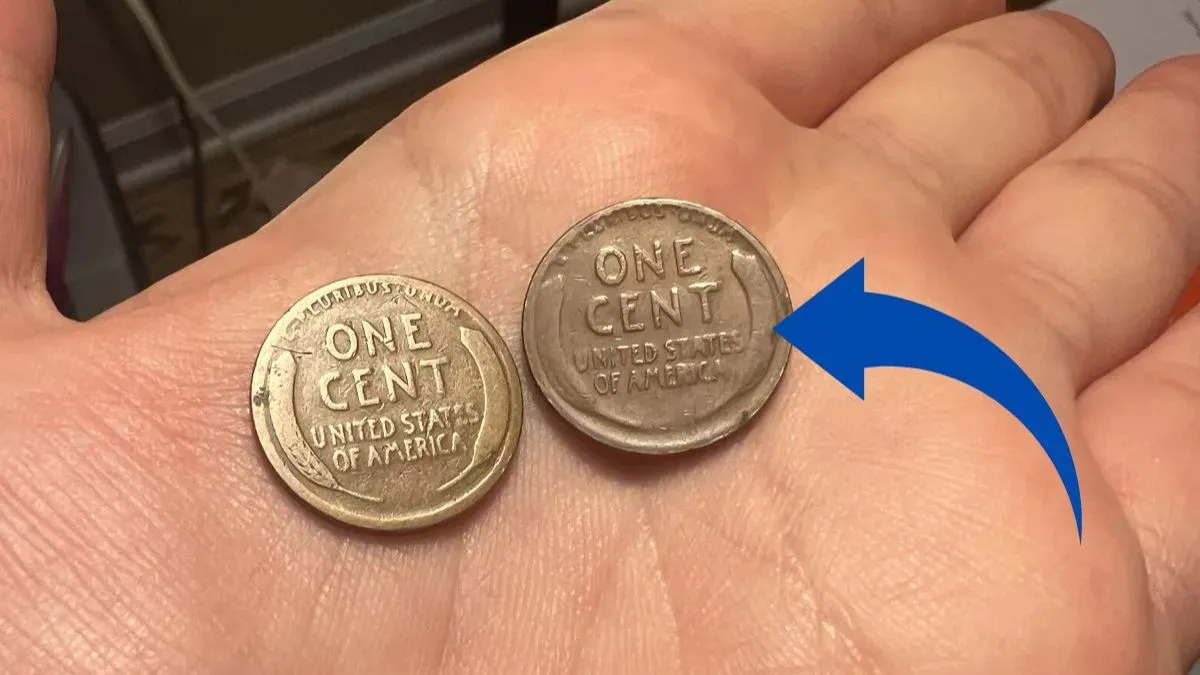The Lincoln Wheat Penny is a special part of American history. It first came out in 1909 to honor the 100th birthday of President Abraham Lincoln. Artist Victor David Brenner designed the coin, showing Lincoln’s face on the front and two wheat stalks on the back to represent the nation’s farming strength. This design stayed in use until 1958, when the Lincoln Memorial replaced the wheat design on the penny’s back.
A Wartime Mistake Worth Millions
One of the most amazing stories about the Lincoln Wheat Penny happened during World War II. In 1943, the U.S. needed copper for weapons and military tools, so pennies were made from steel covered in zinc instead. But at one mint, a few bronze coin blanks from 1942 were left in the machines. These bronze blanks were used by mistake to make 1943 pennies, creating a very rare and valuable coin.
Only a few of these bronze pennies from 1943 were made, and they are now considered some of the rarest coins ever. Because of how few exist and their link to an important time in history, one of these coins is now valued at a stunning $83 million.
What Makes This Penny So Special
Several reasons explain the high value of the 1943 Bronze Penny. First, fewer than twenty are known to exist today. Second, they were made by mistake during a major world event—World War II. These rare coins tell a unique story of American history, making them extremely interesting to both collectors and historians.
The idea that such a valuable coin came from a simple mistake captures people’s imaginations. This penny shows how something small and ordinary can become a priceless piece of history.
How to Tell if It’s Real
If you think you’ve found one of these rare pennies, there are signs to check. First, look at the color. A real 1943 bronze penny will have a reddish tone like most copper coins, not the silver-gray of the steel pennies made that year. A quick magnet test helps too—bronze coins won’t stick to magnets, but steel ones will.
Weight also helps tell the difference. Bronze pennies weigh about 3.1 grams, while steel ones weigh less—around 2.7 grams. Still, these tests are just early steps. Because of the coin’s value, it’s important to have it tested by a coin expert to make sure it’s real.
The Thrill of Searching
What makes this story even better is that these rare pennies might still be out there. Since they were released by accident, they could still be found in old coin jars, family collections, or even in everyday pocket change. That’s why collectors always check their coins carefully—it adds excitement to a simple task.
How This Changed Coin Collecting
Coins like the 1943 bronze penny have inspired many people to take a closer look at their change. More people are learning about coin history and joining the hobby of collecting. This helps protect rare coins and brings attention to America’s past through its currency.
When to Get Expert Help
If you believe you have a rare Lincoln Wheat Penny, you should contact a professional right away. Experts use special tools and knowledge to confirm if a coin is real and to figure out its exact value. These detailed checks are important since even small features can make a big difference in value.
The $83 million Lincoln Wheat Penny is like a hidden treasure, proving that something valuable can still be found in everyday life. It keeps the hope of discovery alive for collectors around the world.
Disclaimer
This article shares general details about rare coins and their estimated worth. Prices listed are based on past sales and current market trends. Actual value depends on condition, expert grading, and demand. Always talk to certified coin experts for real evaluations. The author and publisher are not responsible for financial decisions made based on this content.
FAQs
Q: How can I tell if I have the rare 1943 bronze penny?
A: Look for a 1943 date, reddish color, and test it with a magnet. It should not stick. Then have it checked by a coin expert.
Q: Why are bronze pennies from 1943 so rare?
A: They were made by mistake during WWII when pennies were supposed to be made of steel, not bronze.
Q: Can I still find valuable pennies in circulation?
A: It’s rare, but yes—some have been found in old change jars, collections, or even from pocket change.
Q: Should I clean an old coin before getting it checked?
A: No. Cleaning can lower its value. Always leave rare coins in their natural condition.

